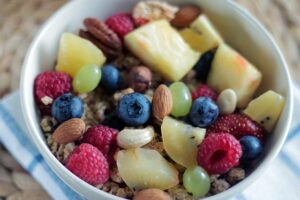Remarkable Romaine and Feeling Zen
It is week #36 for baby and he is the size of a head of remarkable romaine lettuce. Yes, if I haven’t mentioned it before, my friend will soon be the mom of a BOY!
Some may think that romaine is as low in nutrients as basic iceberg lettuce– which is not that exciting to the health-conscious world.
Not so.
Romaine is a good source of vitamins A and C. When it comes to greens, the darker green, the more nutrients, so it does lag behind some other leafy counterparts.
Famous for its crunch, some of the best salads are those that combine the dark green goodness of spinach or kale with romaine. They all get along famously in the bowl. 
Top benefits of romaine include:
*Immunity booster
*Helps heart health
*Helps prevent bone loss
*Promotes healthy eyesight
*Helps heal skin and prevent premature aging
*Helps maintain a healthy pregnancy (due to folate)
*May aid with weight loss
*Helps with digestion and intestinal health (high fiber, mineral and water content)
Obviously, this is another great vegetable to add to your vegetable crisper and to your diet. The most nutrient dense parts are the green leaves. The stalks add the crunch. 
Besides eating romaine in a salad, the enormous leaves make a great sandwich wrap for those who prefer to eat less bread. They add a nutritious crunch to a regular sandwich too.
Add to your smoothie (you won’t taste it) or try grilling or roasting it for a unique flavor.
When choosing your romaine, look for leaves that are sturdy and not brown or yellow. Organic is preferable when available, since it’s easy for the leaves to absorb chemicals and pesticides.
Romaine will keep 5-7 days in your fridge.
How are you today? Really.
Yes, REALLY. How well (or not) are you doing life these days?
There’s a Deep Health Questionnaire that goes surprisingly—deep. When we’re looking to lose weight, have more energy, and enjoy life, there’s much more that determines the outcome than just the food.
Please don’t misunderstand. Food is foundational. And then there’s more…
A few questions from the questionnaire:
- How has your general mood and outlook been lately? Answers can be anywhere on a scale from 1 (utterly miserable) to 10 (hooray for EVERYTHING!)
- How supported do you feel right now by the people around you? Scale from 1 (utterly alone) to 10 (Go Team!)
- How calm and focused are you today? Scale from 1 (Freaking out and frazzled) to 10 (Zen Master)

Perhaps, depending on how you answered the sample questions, you may do well to carve out 10 or 15 minutes of quiet solitude each day. Many people are bombarded with noise and never allow time to consider what is happening in their lives.
All of this affects your weight, health, and ability to fight off illness.
If you’d like to take the complete Deep Health Questionnaire and see where you might like to make some improvements, let me know.
Now is a great time to begin.
Much love,
Carol
“I went to the woods because I wanted to live life deliberately.”–Henry David Thoreau








